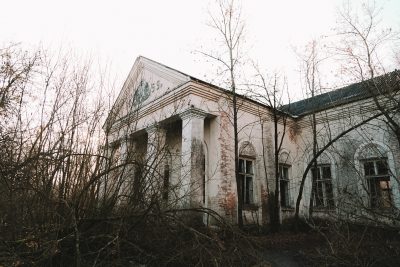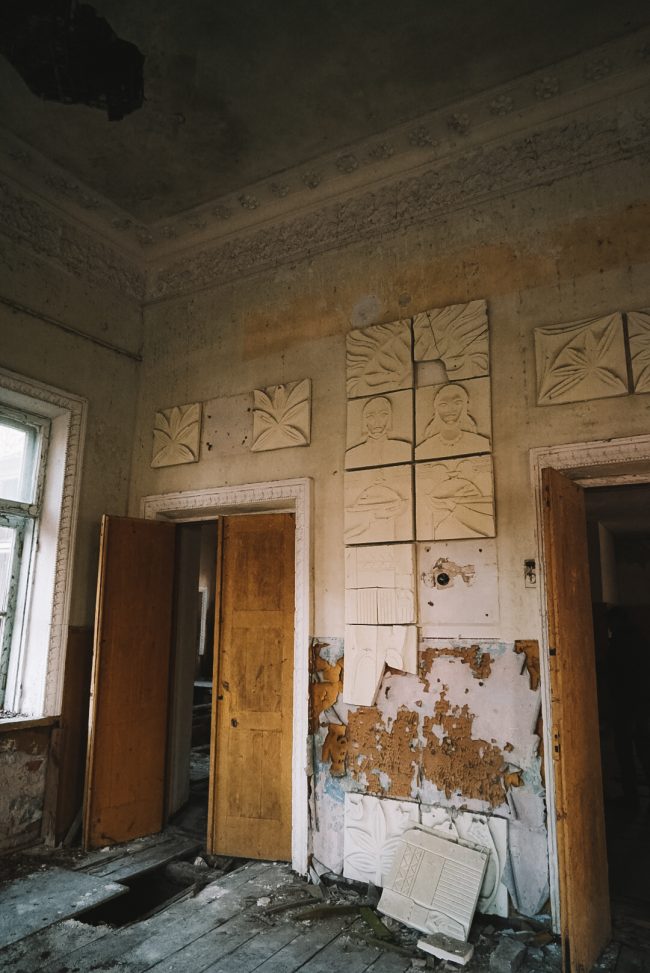
The Modern Century Space Race — Sustainable Energy
Kyiv, Ukraine is a funny place. One of Europe’s poorest countries, this place is filled with Soviet architecture, stand-still traffic, and poor infrastructure. It has a special charm that flows through it, one that I love, a charm filled with colourful food, interesting characters, but, a dark history.
Ukraine has seen it’s share of hardships, most recently the 2014 Russian invasion of Crimea and the Ukrainian Revolution, known as Euromaidan, that culminated in the ousting of corrupt President Viktor Yanukovych and the Ukrainian government. But none of this should surprise you — Ukraine has been staring down the barrel of the Russian gun for much of the 20th and 21st century.
In late December 2019, I visited Ukraine with a mild obsession for Chernobyl. After nuclear energy took off in the late 70s and governments scrambled to reprieve themselves from the grips of the 1973 oil crisis, April 1986 saw the world’s worst nuclear disaster.
- The road leading to Kyiv
- A sign at the entrance of Chernobyl town. In Cyrillic it says “Chernobyl”
- A road leading into the exclusion zone in Chernobyl
As a result of a design flaw on the Chernobyl 4 Reactor, the plant exploded and burnt down, releasing a wave of radioactive particles into the surrounding environment and further afield in Belarus and Ukraine. Around 350,000 people were evacuated, deserting entire towns and villages.
The area is uninhabitable for at least another 20,000 years, and much of the exclusion zone sits abandoned, aside from a few residents who decided to move back (illegally) to their villages after the disaster. While some workers live in the nearby town of Chernobyl, the soviet purpose-built city of Pripyat just three kilometres away from the reactors is a complete ghost town — a giant monument to what once was the height of Soviet innovation.

An abandoned House of Culture in a former village near Chernobyl
- The theatre stage inside the House of Culture
- The foyer in the House of Culture
The idea of nuclear energy and it’s place in sustainability is an interesting one.
The jury is out on nuclear energy amongst most of us — we don’t want it… but we also don’t know much about it. After the meltdowns of Chernobyl and Fukushima, the world has kept a close and wary eye on nuclear energy. While some say nuclear reactors are as safe as a chocolate factory, others have seen the damage of meltdowns firsthand, contamination spread far and wide, families and lives displaced.
- A look at the hallway inside the abandoned kindergarten in the 25km exclusion zone
- Inside the abandoned Kindergarten where children would have taken their daily naps
Sustainable energy is a fundamental challenge in powering the world. The threats of the climate emergency are edging closer and closer, especially here in Australia where our government continue to invest in coal mines and push back against “ugly, noisy and visually awful” wind turbines that are the “dark satanic mills of the modern era”, courtesy of former Prime Minister Tony Abbott.
It’s clear we need a solution, and a fast one. Despite being in the era of a renewable energy boom, we may see a rebound of greenhouse gases once we return to a level of pre-pandemic normal, which could push our 2030 emissions even higher. This could lead us to a temperature rise of 3 degrees this century — an incredibly scary thought considering 30 per cent of the world’s population are exposed to deadly heat waves more than 20 days a year.

A Chernobyl dog. Many animals were left behind when people were evacuated in 1986 — now their offspring roam the streets of Pripyat and Chernobyl, but the winters are tough and many die
Renewable energy is expensive. Nuclear is no different. Is it worth it?
After the Fukushima disaster, Germany moved to shut down their Nuclear power plants, a knee-jerk reaction to the wide-spread damage that was occurring in Japan in 2011. A quarter of Germany’s energy output came from nuclear, which has now been largely replaced by coal-fired plants. A recent report stated that the phase-out of German nuclear power has actually resulted in 1,100 more deaths per year from SO2 and NOx pollution, iterating that 80 per cent of the increase in mortality has been from hard coal plants.
Contrary to popular belief, nuclear energy is actually pretty clean, and it’s renewable. Though, it’s widely recognised that the disposal of nuclear waste is a serious problem — one that we just can’t seem to figure out.
After the Chernobyl meltdown, a temporary shelter structure, known as the sarcophagus, was hastily built over the reactor to contain the nuclear waste. This shelter started falling apart, so they designed a new shelter to confine the radioactive remains for the next 100 years. Funding has now run out, so one can only imagine what will happen once the current structure falls apart.

The sheer scale of the Chernobyl reactor encased in the Sarcophagus — this photo was taken 2km away
Nuclear energy is lucrative, and innovation is still possible, but can it happen quick enough to confront the climate emergency we are facing without cutting corners? Probably not.
Chernobyl and Fukushima linger on people’s minds, and it’s unlikely that governments will move to make drastic changes to develop nuclear power in their states. As other renewables rise up, the promise of a global nuclear transformation is long gone.

Abandoned political propaganda lay behind the main theatre in Pripyat
The nuclear dream died alongside Fukushima’s meltdown. But there’s still hope for renewables
Too often is the idea of sustainability focused at the individual level. Go vegan, shop for ethical clothes, chastise your housemate for leaving their ceiling fan on all day. While these things may help, real, efficient and quick change is not possible for individuals to enact on the world. Our governments must make active steps on our behalf in ensuring our energy is clean and renewable, and this is something that is becoming more efficient, more affordable, and more innovative.
There are an incredible variety of renewable energy options, from solar, wind, and hydropower to geothermal energy, bioenergy and ocean energy. Battery storage and smarter technologies are strengthening our grids and allowing us to be less dependent on coal as a power grid stabiliser.
Change in on the horizon
While our social feeds are filled with depressing facts on how our hair is going to be singed off by 2050, change is happening, and Hyrdo is looking to be our renewable energy hero. In 2019, renewable energy represented just over a quarter of the world’s energy output, and this will likely increase to 45 per cent by 2040. While the developing world is still lagging behind in renewable energy investment and Australia’s commitment to producing clean energy remains dismally low, real change is happening and we should be proud to see it.
All photos copyright of Emily Stavljanin







